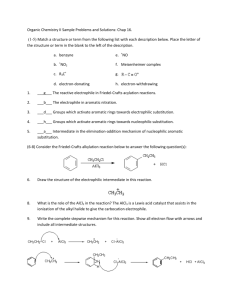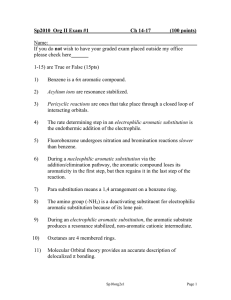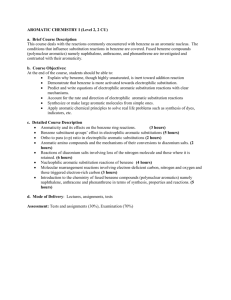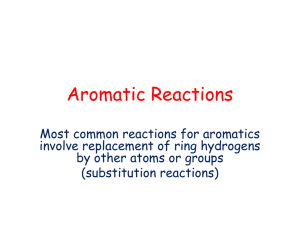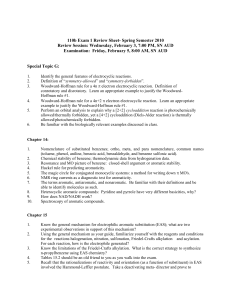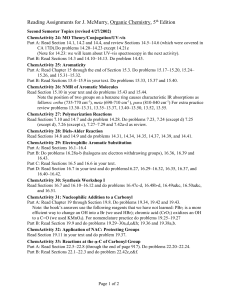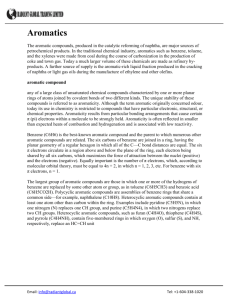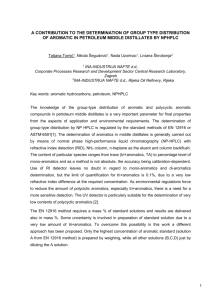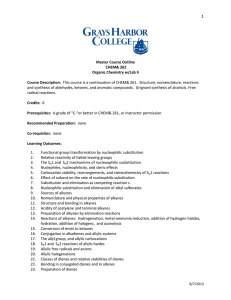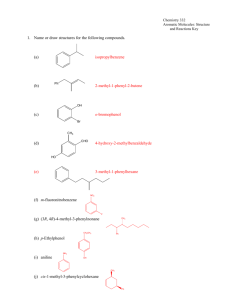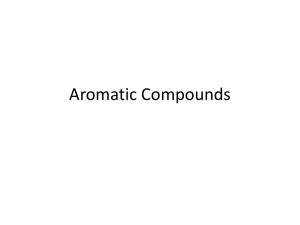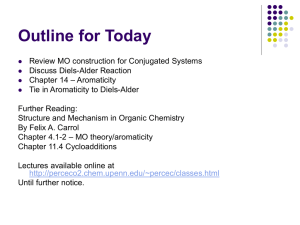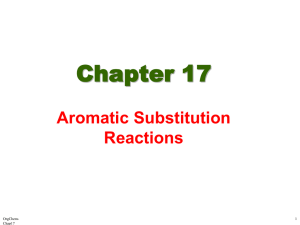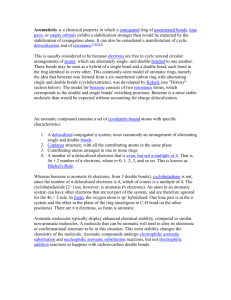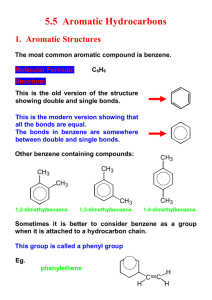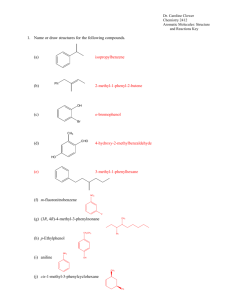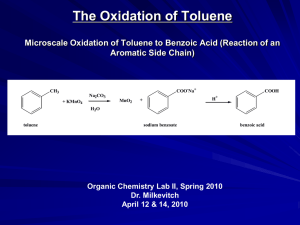Chap Seventeen: Reactions of Aromatics
advertisement
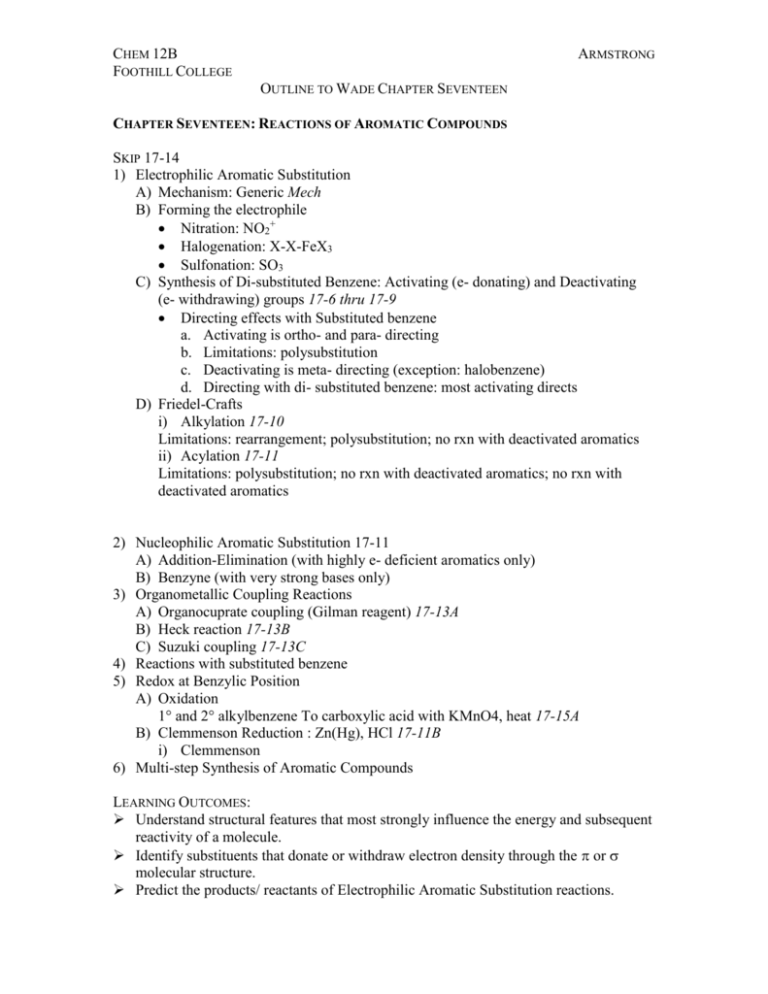
CHEM 12B FOOTHILL COLLEGE ARMSTRONG OUTLINE TO WADE CHAPTER SEVENTEEN CHAPTER SEVENTEEN: REACTIONS OF AROMATIC COMPOUNDS SKIP 17-14 1) Electrophilic Aromatic Substitution A) Mechanism: Generic Mech B) Forming the electrophile Nitration: NO2+ Halogenation: X-X-FeX3 Sulfonation: SO3 C) Synthesis of Di-substituted Benzene: Activating (e- donating) and Deactivating (e- withdrawing) groups 17-6 thru 17-9 Directing effects with Substituted benzene a. Activating is ortho- and para- directing b. Limitations: polysubstitution c. Deactivating is meta- directing (exception: halobenzene) d. Directing with di- substituted benzene: most activating directs D) Friedel-Crafts i) Alkylation 17-10 Limitations: rearrangement; polysubstitution; no rxn with deactivated aromatics ii) Acylation 17-11 Limitations: polysubstitution; no rxn with deactivated aromatics; no rxn with deactivated aromatics 2) Nucleophilic Aromatic Substitution 17-11 A) Addition-Elimination (with highly e- deficient aromatics only) B) Benzyne (with very strong bases only) 3) Organometallic Coupling Reactions A) Organocuprate coupling (Gilman reagent) 17-13A B) Heck reaction 17-13B C) Suzuki coupling 17-13C 4) Reactions with substituted benzene 5) Redox at Benzylic Position A) Oxidation 1° and 2° alkylbenzene To carboxylic acid with KMnO4, heat 17-15A B) Clemmenson Reduction : Zn(Hg), HCl 17-11B i) Clemmenson 6) Multi-step Synthesis of Aromatic Compounds LEARNING OUTCOMES: Understand structural features that most strongly influence the energy and subsequent reactivity of a molecule. Identify substituents that donate or withdraw electron density through the or molecular structure. Predict the products/ reactants of Electrophilic Aromatic Substitution reactions. CHEM 12B FOOTHILL COLLEGE ARMSTRONG OUTLINE TO WADE CHAPTER SEVENTEEN Predict the products/ reactants of Nucleophilic Aromatic Substitution reactions. Predict the mechanism of a Nucleophilic Aromatic substitution reaction according to the structural features of the reactant. Use curved-arrow formalism to depict the known mechanism of an organic reaction. Devise multi-step syntheses of molecular targets using comprehensive knowledge of functional group transformations. 1. Tell which of the following reactions is faster and WHY: 2. Propose a sequence of steps to effect the following chemical transformation in high yield. Show all intermediate products. 3. Give the mechanism of the following chemical transformation using curved arrow formalism. Show every step in sequence and include all intermediates, proton transfer steps and formal charges.


